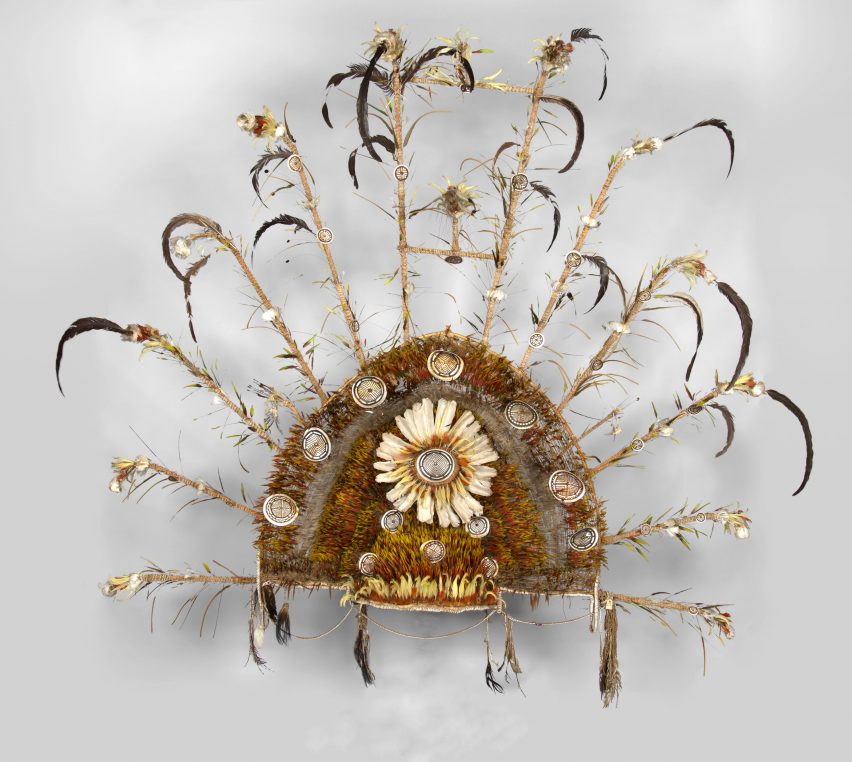
Coiffe, early XX th century, Yule Island, Papua New Guinea, National Museum van Wereldculturen, Leyde, Holland, © musée du quai Branly – Jacques Chirac, photo Thierry Ollivier, Michel Urtado
After the amazing exhibition of woven baskets, Musée du Quai Branly Jacques Chirac is inviting us to a new show, “Oceania”, devoted to the art of the 25 000 Pacific islands from Hawaii to Papua New Guinea, Samoa and New Zealand. Following Captain James Cook‘s first voyage in 1768, we travel through the great artistic richness of these populations, who each had their own language and style but share a common love for the sea. What struck me is how beautiful all pieces are and this is also what Cook’s contemporaries thought!
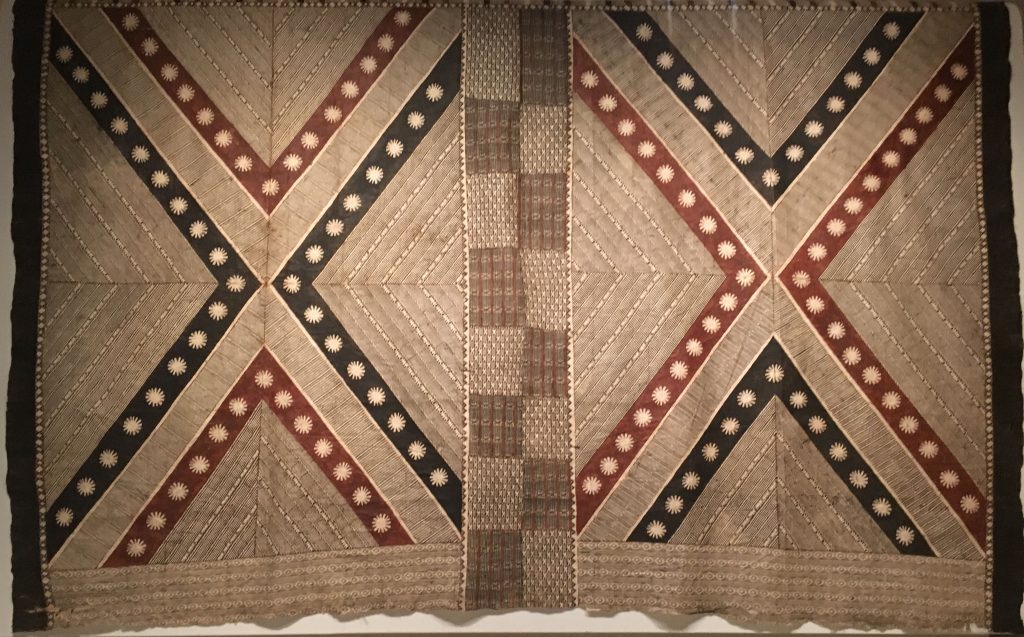
Masi, fabric made of bark, used for separating space in the house, Matuku or Morala, Oriental Fidji islands, Museum of Archaeology and Anthropology of Cambridge University
The exhibition opens on a series of wooden canoes, thus illustrating the importance of navigation between islands. In a territory where everything originates from water, some boats are used for travelling, others, called “Wuramon”, are pirogues of the souls, and are used for initiation rites. Tortoise and birds navigate on them and symbolize the passage to death.

Wuramon, pirogue of the souls, Mid XX th century, Asmat people in western Papua, Nationaal museum van Wereldculturen, Amsterdam, Holland
Pirogues were sculpted and decorated and many statues are exhibited here. Houses stood on pilotis, like the anthropomorphic sculpture of Doyo village in Western Papua. The ancestor is sculpted in wood and supports the house. Each style tells the origin of the tribe and the divinities which are worshipped.
A whole section is devoted to bark fabrics , “Masi”, lent by Cambridge University. Some come from Fidji, others from Samoa, a cotton quilt comes from the Cook Islands. These techniques were introduced by missionaries wives and were used as bartering presents for weddings or births. The modernity of their designs is striking.
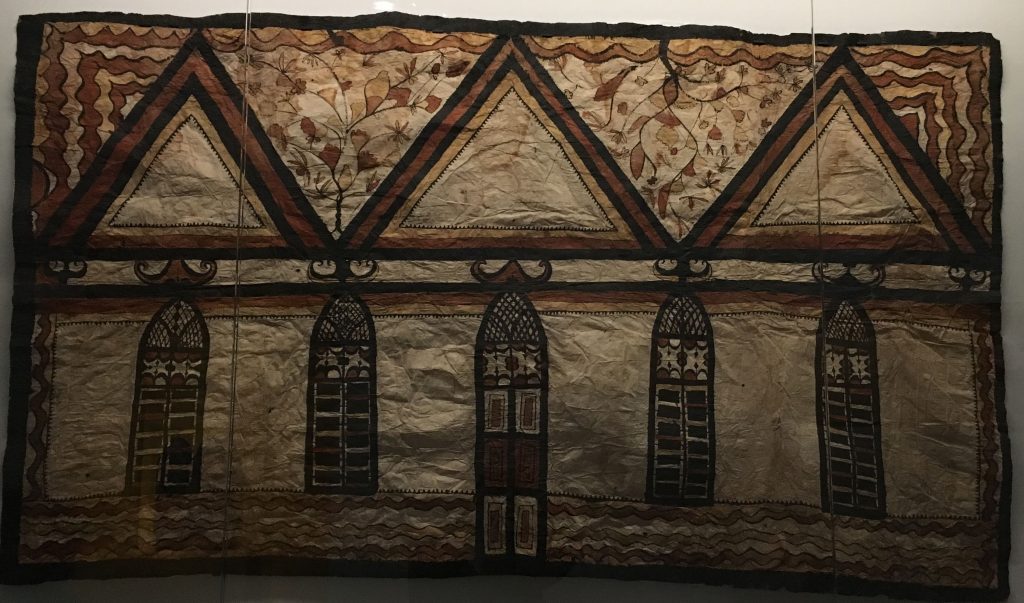
Painted bark fabric depicting the church of Titkaveka, ca 1842-1846, Rarotonga, Cook islands, Museum of Archaeology and Anthropology, Cambridge University
Towards the end of the exhibition, which comprises 200 items, a video “In pursuit of Venus (infected)” made by New Zealand artist Lisa Reihana, uses a French 19 th century panoramic wallpaper entitled “The savages of the Pacific Ocean” designed by Jean Gabriel Charvet. It relates a fantasized paradise based on Captain Cook‘s journals where autochtones meet British or French soldiers. French explorer Dumont d’Urville travelled to the Pacific and Antarctica between 1827 and 1840 and brought back some wooden Maori sculptures.
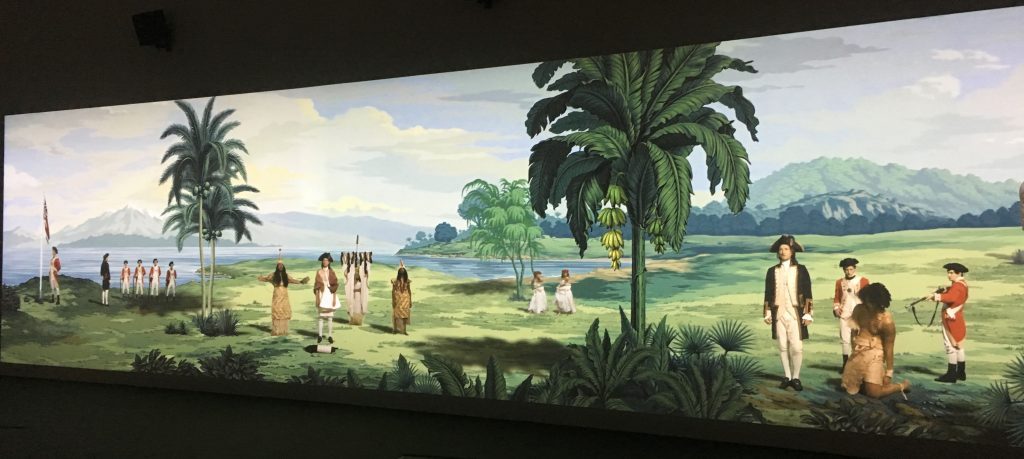
Lisa Reihana, In pursuit of Venus (infected), detail, 2015-2017, video 64 mins after Jean Gabriel Charvet
The show is curated by Professor Nicholas Thomas from Cambridge University, Dr Peter Brunt from Victoria University in Wellington, NZ, and Dr Adrian Locke from the Royal Academy, London. It is an amazing discovery and the few pieces of contemporary art are fun. Voyage and settlements, rituals and christian influences, memory and daily life all lead in the exhibition to beautiful design and new materials.
This show was produced over five years with the Royal Academy of Arts in London where entrance was free this fall, for all New Zealanders and Pacific island passport holders.

Figure with hooks, Yimar ethnic, Karewari, © musée du quai Branly – Jacques Chirac, photo Thierry Ollivier, Michel Urtado
Oceania at Musée du Quai Branly Jacques Chirac, until July 7.
Share this Post
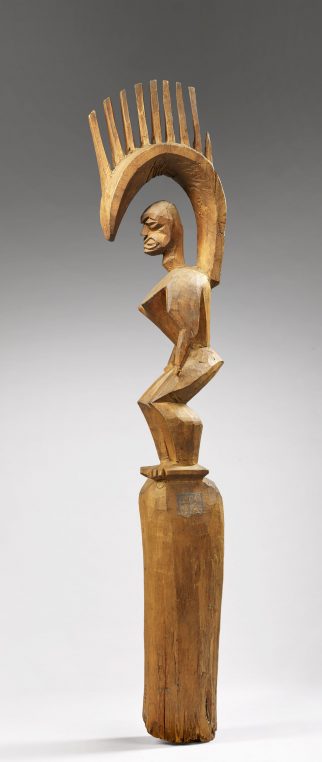

4 Comments on “Oceania, an aesthetical delight at Quai Branly”
Extraordinaire expo! Il faut y aller!!!!
This looks wonderful, thank you Laure.
I hope this will still be on display in May!!!
As usual you find all the good stuff in Paris.
So enticing. Thank you Laure
We’re coming to Paris in June and hope it will still be on. Kyra